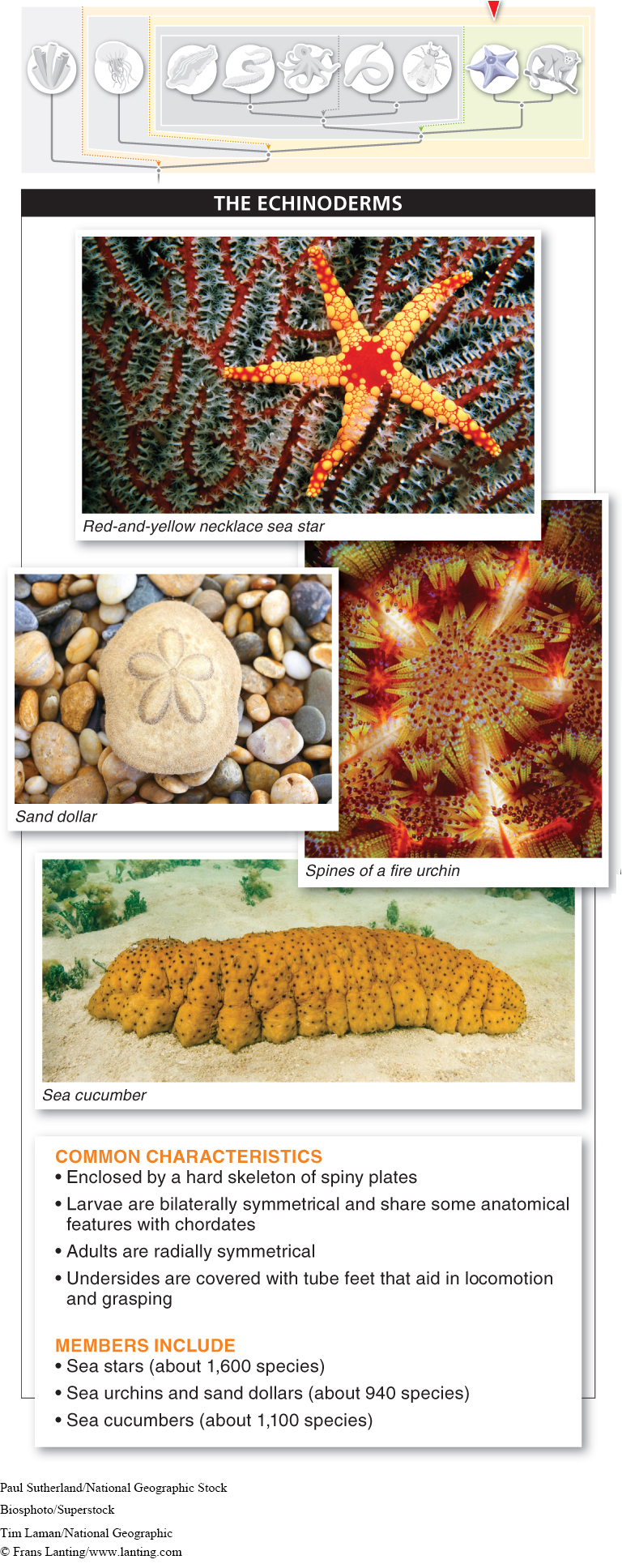Appearances can be deceiving. Sea stars and other members of the phylum Echinodermata live in the oceans, are radially symmetrical (as adults), and are covered by spiny plates. And yet, because they are deuterostomes (their gut forms from back to front), it turns out that they are more closely related to humans than to any other invertebrate group. Echinoderms stand as an example of how classifying organisms based on evolutionary relatedness—
The echinoderms include about 6,000 species of marine animals, most of which are enclosed by a hard skeleton of spiny plates (FIGURE 11-19). Adult sea stars (starfishes and brittle stars), probably the most recognizable echinoderms, have five or more appendages evenly distributed around their body circumference. They move with equal ease in any direction, and their sensory organs are distributed around their circumference. Adult sea urchins and sand dollars don’t have projecting arms, but they also are radially symmetrical.

Although radial symmetry is characteristic of adult echinoderms, their larvae are bilaterally symmetrical. Bilaterally symmetrical larvae are evidence that echinoderms evolved from bilaterally symmetrical ancestors, and their radial symmetry as adults is an adaptation associated with their mode of locomotion and feeding specializations.
Echinoderms do not have a brain. They have a nervous system that consists of a central ring of nerves, with branches that extend into each of their appendages and help them gain information about and respond to their environment. Echinoderms creep on little tube feet that are extensions of an internal system of water-
469
Although each tube foot is tiny, there are thousands of them, and their combined force allows a sea star to pull the two shells of a clam or mussel apart. Once it has the shells apart, an extraordinary and unexpected thing happens. The sea star pushes its stomach out through its mouth and inserts it into the opened shells. The stomach then secretes digestive enzymes that break down the clam or mussel tissue, and the sea star absorbs the soup that results. Sea urchins feed on algae, scraping them loose from rocks with sharp tooth-
TAKE-HOME MESSAGE 11.12
Because they are deuterostomes (as are vertebrates), echinoderms are the invertebrates that are the closest evolutionary relatives to the vertebrates (and other chordates). Their aquatic larvae are bilaterally symmetrical and share some anatomical features with chordates, but adult echinoderms are radially symmetrical.
Although they lack a backbone, echinoderms are considered the closest evolutionary relatives to vertebrates. Why?
Echinoderms and vertebrates both are deuterostomes, meaning their gut develops from back to front
470